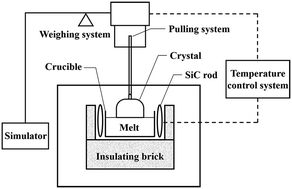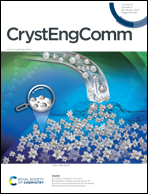The growth and characterization of six inch lithium niobate crystals with high homogeneity
Abstract
As a kind of excellent piezoelectric material, lithium niobate (LiNbO3) has been widely used for surface acoustic wave (SAW) devices. On a self-designed automatic diameter control system, large diameter (6 inch) LiNbO3 crystals without cracks are successfully grown by choosing a suitable temperature gradient, starting composition, and growth parameters with the Czochralski method. The constituent phases of the LiNbO3 crystals and their polycrystalline precursor are determined by X-ray powder diffraction, and the Li content along the crystal growth direction is determined by Raman scattering spectroscopy. The temperature gradient and growth parameters that influence the growth of the large diameter crystals are discussed in detail. The chemical analyses reveal that the 6 inch LiNbO3 crystals have high homogeneity. The average Curie temperature is 1143.04 ± 1.3 °C, and the piezoelectric coefficient d22 is up to 19.8 pC N−1. The specific heat (Cp), thermal expansion coefficients (αa and αc), thermal diffusion coefficients (λa and λc), and thermal conductivities (κa and κc) of the LiNbO3 crystals are also determined.



 Please wait while we load your content...
Please wait while we load your content...